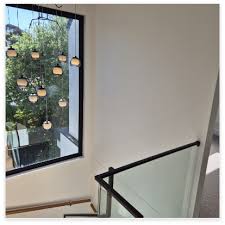
If you’re planning an additional dwelling, finding a dependable granny flat builder can make or break your project. Start your search with experienced local companies like granny flat builder melbourne www.prevailinghomes.com.au that understand Melbourne zoning, weather conditions and market expectations.
Granny flats — also known as secondary dwellings, backyard cottages, or accessory dwelling units (ADUs) — have become increasingly popular across Melbourne. They provide flexible living solutions for aging parents, adult children, rental income or home offices. However, choosing the right granny flat builder in Melbourne requires more than price-checking. You need someone who can navigate council regulations, deliver quality construction, and communicate clearly from planning to handover.
Why choose a specialist granny flat builder in Melbourne?
Specialist builders who focus on granny flats bring specific advantages: familiarity with local council requirements, experience designing compact but functional layouts for limited sites, and established supply chains for materials suitable to Melbourne’s climate. They also tend to provide clearer cost estimates and timelines, reducing the risk of unexpected delays or budget blowouts.
Understanding council regulations and permits
One of the first hurdles in a Melbourne granny flat project is compliance. Each local council in Victoria has its own planning scheme and requirements regarding minimum lot size, site coverage, parking, overshadowing and amenity impacts. Some councils allow ‘as of right’ construction for certain site types, while others require a planning permit. A good builder will either manage the permit application or work closely with a planning consultant to ensure your design meets council rules.
Design considerations for Melbourne sites
Designing a granny flat in Melbourne must respond to narrow blocks, varying orientations and local character overlay areas. Key considerations include:
- Orientation and natural light — designing windows and living spaces to capture northern light where possible.
- Insulation and ventilation — selecting materials and detailing that perform across Melbourne’s variable seasons.
- Privacy and acoustic separation — especially important on smaller lots where neighbours are close.
- Accessibility — single-level designs with minimal thresholds for elderly occupants.
- External finishes — matching or complementing the primary dwelling and street character.
Cost drivers and budgeting

Costs vary widely depending on size, finishes, site constraints and permit requirements. Typical cost drivers include:
- Site preparation: retaining walls, drainage and rock excavation can increase costs substantially.
- Utilities: connecting to sewer, water, gas and power can involve service provider fees and trenching costs.
- Custom finishes: higher quality kitchens, bathrooms and fixtures raise the price per square metre.
- Access and logistics: limited vehicle access or tight inner-city sites may require more labour or specialised equipment.
Obtain a detailed quote that itemises preliminary works, construction, finishes and contingencies. Expect initial site inspections and possibly a preliminary design fee to get an accurate estimate.
Construction process and timeline
A typical project progresses through these stages: site assessment and concept design, council approval, detailed documentation and engineering, site preparation, construction and final inspections. Depending on complexity and permit timelines, a straightforward build can take several months from approval to completion. Builders with established crews and subcontractor relationships often deliver faster and with fewer surprises.
Materials and sustainability
Melbourne homeowners increasingly prioritise sustainability. Consider:
- Energy-efficient glazing and insulation to reduce heating bills in winter and cooling loads in summer.
- Water-saving fixtures and rainwater capture systems for garden irrigation.
- Low-VOC paints and recycled or responsibly sourced timber for healthier indoor air.
- Solar-ready roofs and orientation that supports future solar PV installation.
A builder who recommends sustainable options can help you improve long-term running costs and resale appeal.
How to choose the right builder
Follow a structured process when selecting a granny flat builder in Melbourne:
- Check references and past projects: view completed builds and speak with past clients about timeliness and workmanship.
- Verify credentials: ensure the builder is registered with relevant Victorian authorities and holds insurance (public liability, workers’ compensation and home warranty where applicable).
- Request detailed quotes: compare items line by line rather than choosing the lowest price outright.
- Communicate expectations: clarify warranties, who manages council interactions, and how variations will be handled.
- Ask about subcontractors: established partnerships often mean better coordination and reliability.
Common pitfalls and how to avoid them
Many issues arise from poor planning or vague contracts. Avoid problems by ensuring:
- Site constraints are fully investigated before signing contracts.
- Costs for utility connections and landscaping are included or clearly noted.
- Timelines factor in permit approval periods and potential weather delays.
- Change orders are documented and priced before work proceeds.
Maximising value from your granny flat
To get the most from your investment, design for versatility: a studio layout that becomes a rental, home office or guest suite; fold-away furniture to expand living areas; outdoor courtyards to increase usable space. Good insulation, efficient appliances and thoughtful storage solutions boost appeal to renters and future buyers.
Questions to ask when getting quotes
Before signing any contract, ask potential builders:
- Do you handle planning permit applications, or will I need a consultant?
- Can you provide a fixed-price contract with a clear scope of works?
- What warranty do you offer on workmanship and materials?
- How will unexpected site costs be handled?
- What is the projected construction timeline and milestones?
Conclusion
Building a granny flat in Melbourne offers many advantages, from extra income to multi-generational living. Success depends on choosing a builder who understands local regulations, site-specific challenges and practical design solutions. Take time to compare builders, review past projects, and clarify the scope and costs so your granny flat project delivers comfort, compliance and long-term value.

